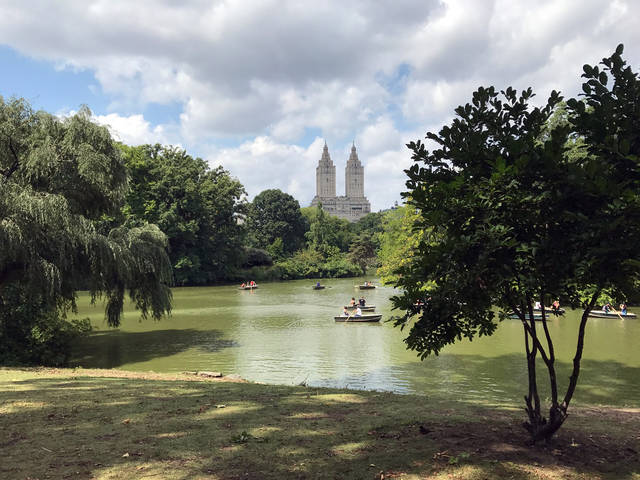We just returned from a long trip that brought us through two monster cities. ADVERTISING We just returned from a long trip that brought us through two monster cities. London and New York have in common populations in the many
We just returned from a long trip that brought us through two monster cities.
London and New York have in common populations in the many millions of humans. They are approximately the same size in square miles as the City and County of Honolulu. What is remarkable is that these great cities have embarked on major tree-planting projects during the past few decades. They also have a past when forward-thinking planners set aside major tracts of land for parks, watersheds and wildlife. They seemed to have known intuitively that we humans need trees to help us keep our sanity. As loud and crowded as these cities are, there are quiet sanctuaries where we humans can reconnect with nature. London and New York have made tremendous efforts to plant shade trees along the commercial and residential streets. These efforts are especially noticeable in New York City where more than 1 million street trees have been planted in the past 25 years. Honolulu has been fortunate as well, thanks to the Outdoor Circle and community leaders who promoted city landscape projects.
When it comes to our Island of Hawaii, we are almost 10 times larger than these cities with a fraction of the population. We have abundant resources we often take for granted. Our island is special in that we can grow almost any plant in the many microclimates that exist here. We have some of the most beautiful scenery found anywhere in the world. However, it does take conscious planning, planting and maintenance to bring out the best.
By planting trees, we actually can change the “microclimate” and make our gardens and community several degrees cooler in the summer. If trees are placed just right, we can even create a garden climate that is warmer and less windy during the cooler season. It’s really interesting when we expand these basic principles. What happens when everyone in the neighborhood or community plants trees? Well, we can actually change the climate over fairly large areas. USDA foresters have research data supporting the theory that reforestation can increase local rainfall in dry areas and modify temperature extremes. You might say that trees are natural air conditioners. When enough are planted in an area, temperatures remain cooler in the summer. The sun’s rays don’t have a chance to penetrate and heat up the ground. In the winter, those strong trade winds are blocked. The trees keep things cool in July and give protection from wind in January.
The best place to start improving the beauty of the island is right at home. In selecting trees for shade, consider the hundreds of varieties of tropical plants that produce food as well as shade. Depending on your taste, available space for planting and location, we can grow almost anything. The more popular types of fruit trees include mango, coconut, citrus, guava, avocado, papaya, lychee, breadfruit and banana. Of course, our No. 1 nut, the macadamia, also is an attractive choice.
Besides the more common edibles, the cashew, carambola, sapodilla, sugar apple, sour sop, loquat, longan and tamarind are others that are ornamental trees.
We don’t have to stop with these. Shrubs such as the natal plum, ceylon gooseberry, surinam cherry or pineapple guava also might be used.
Vines often add the right touch on a fence. Passion fruit, ceylon spinach, winged bean and others will produce goodies to treat your appetite.
Even edible ground covers can be incorporated into a garden. Many herbs are tough and attractive as are some of our tropical vegetables, such as dry-land taro, sweet potato, monstera and Tahitian spinach.
There are so many choices, but there are several books available at local bookstores and garden supply stores to help.
“Sunset’s National Garden Encyclopedia” is an example of one that is helpful to the beginning horticulturist of the expert. There also are many publications available through the University of Hawaii Cooperative Extension Service to help you with care and use of some of the plants you might select. These can help in planning your landscape and maintaining it in the proper manner.



